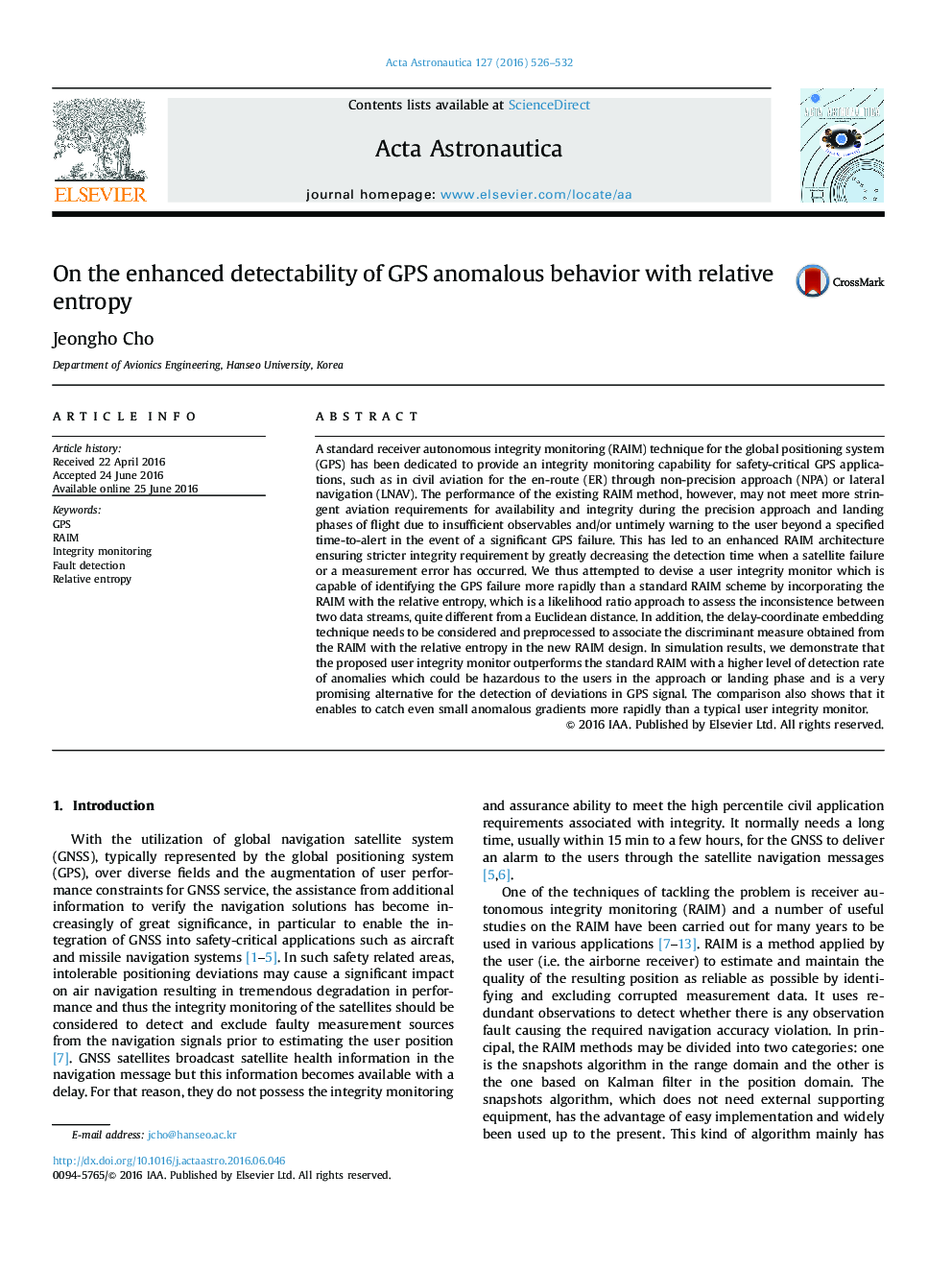| Article ID | Journal | Published Year | Pages | File Type |
|---|---|---|---|---|
| 8056085 | Acta Astronautica | 2016 | 7 Pages |
Abstract
A standard receiver autonomous integrity monitoring (RAIM) technique for the global positioning system (GPS) has been dedicated to provide an integrity monitoring capability for safety-critical GPS applications, such as in civil aviation for the en-route (ER) through non-precision approach (NPA) or lateral navigation (LNAV). The performance of the existing RAIM method, however, may not meet more stringent aviation requirements for availability and integrity during the precision approach and landing phases of flight due to insufficient observables and/or untimely warning to the user beyond a specified time-to-alert in the event of a significant GPS failure. This has led to an enhanced RAIM architecture ensuring stricter integrity requirement by greatly decreasing the detection time when a satellite failure or a measurement error has occurred. We thus attempted to devise a user integrity monitor which is capable of identifying the GPS failure more rapidly than a standard RAIM scheme by incorporating the RAIM with the relative entropy, which is a likelihood ratio approach to assess the inconsistence between two data streams, quite different from a Euclidean distance. In addition, the delay-coordinate embedding technique needs to be considered and preprocessed to associate the discriminant measure obtained from the RAIM with the relative entropy in the new RAIM design. In simulation results, we demonstrate that the proposed user integrity monitor outperforms the standard RAIM with a higher level of detection rate of anomalies which could be hazardous to the users in the approach or landing phase and is a very promising alternative for the detection of deviations in GPS signal. The comparison also shows that it enables to catch even small anomalous gradients more rapidly than a typical user integrity monitor.
Related Topics
Physical Sciences and Engineering
Engineering
Aerospace Engineering
Authors
Jeongho Cho,
